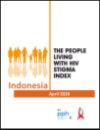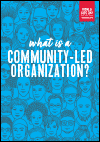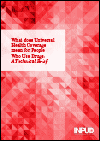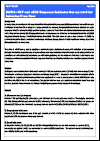Publications on People Who Inject Drugs (PWID)

This document is based on currently available scientific evidence on treatment for drug use disorders and sets out a framework for the implementation of the Standards, in line with principles of public health care. The Standards identify major components and features of effective systems for the treatment of drug use disorders. They describe treatment modalities and interventions to match the needs of people at different stages and severities of drug use disorders, in a manner consistent with the treatment of any chronic disease or health condition.


Communities make an invaluable contribution to the AIDS response. Communities of people living with HIV, of key populations—gay men and other men who have sex with men, people who use drugs, sex workers, prisoners, transgender people and prisoners—and of women and young people lead and support the delivery of HIV services, defend human rights, support their peers. Communities are the lifeblood of an effective AIDS response and an important pillar of support.

Community-led organizations are led by the people who they serve and are primarily accountable to them. In the AIDS response, this includes organizations by and for people living with HIV or tuberculosis and organizations by and for people affected by HIV, including gay men and other men who have sex with men, people who use drugs, prisoners, sex workers, transgender people, women and young people.

With the Ministerial Declaration of March 2019 having ostensibly set the direction of international drug policy for the next decade or so,1 the launch of the 2019 World Drug Report only three months later was arguably surrounded by less expectation than the year before. Then, while missing the opportunity to provide a review of progress made in the 10 years since the Political Declaration,2 its contents still had the potential to feed directly into the deliberations surrounding the UN’s latest soft law instrument pertaining to drugs.

The United Nations Development Programme’s (UNDP’s) Strategic Plan 2018–2021 and its HIV, Health and Development Strategy 2016–2021 highlight the role UNDP can play in supporting governments to attain the SDGs. This includes addressing the structural barriers and discriminatory laws, policies and practices that marginalize vulnerable population groups, including people who use drugs. In June 2015, UNDP released a discussion paper reviewing the impacts of drug enforcement policies on public health, safety and security, and human rights of poor and marginalized populations.

On 23rd of September, 2019 the United Nations General Assembly will hold a High-Level Meeting (HLM) on Universal Health Coverage (UHC). The theme of this meeting is “Universal Health Coverage: Moving Together to Build a Healthier World” and ostensibly aims to accelerate progress towards universal health coverage. Given the political momentum generated due to the upcoming HLM on UHC, and the potential for country-level action towards realising universal health coverage, it is important for all drug user rights advocates to stay informed.

In Hong Kong, the number of HIV cases transmitted through injecting drug use (IDU) has remained low up till now and contributed to less than 5% of all reported cases cumulatively. However, the potential risk of cluster outbreak and rapid upsurge of infection among the IDU population is always a concern. To monitor HIV-related risk behaviours and access to HIV testing services among IDU, this population has been included as one of the four at-risk populations in the HIV/AIDS Response Indicator Survey (HARiS) implemented since 2013.

The drug policy reform movement continues to strengthen and diversify with many new players joining the calls for a serious re-think of repression and punishment as instruments of drug control. Repressive drug control measures are increasingly being understood as a form of state violence that serves to deepen and entrench structural inequalities which has garnered stronger interest in challenging current drug policies from other social movements such as those working on racial inequality, women’s rights, indigenous rights, LGTIQ+ rights to prison abolition and beyond.






